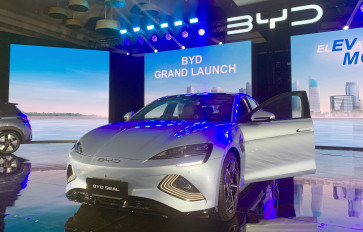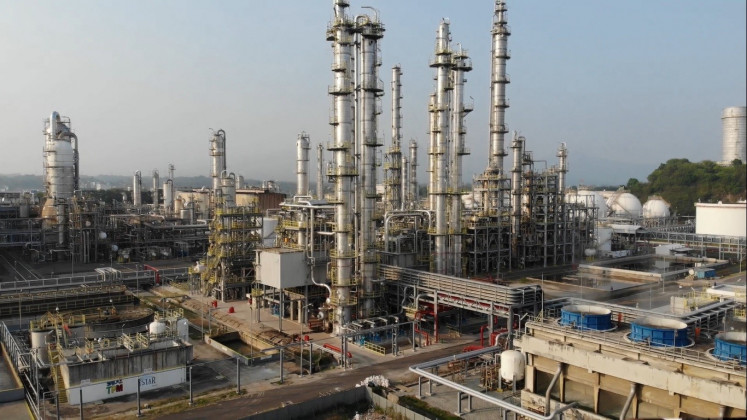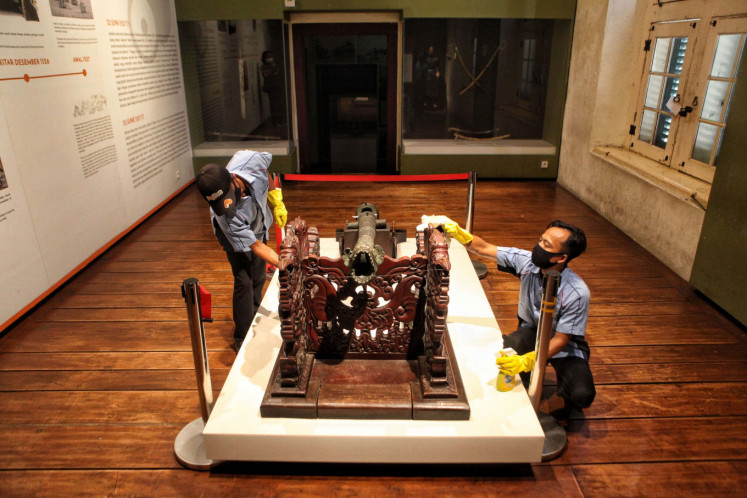Executive Column: Akzo Nobel to strengthen presence in Indonesia: CEO
Amsterdam-based Akzo Nobel NV is the world’s largest paint and coating company, and a major producer of specialty chemicals
Change text size
Gift Premium Articles
to Anyone

A
msterdam-based Akzo Nobel NV is the world’s largest paint and coating company, and a major producer of specialty chemicals. Having survived fairly unscathed from the global slowdown, the company posted a 7 percent rise in revenue to ¤15.7 billion (US$19.9 billion) last year. The Fortune Global 500 giant has operations in more than 80 countries, including several manufacturing plants in Indonesia, and owns well-known brands such as Dulux, Sikkens, International and Eka. Akzo Nobel’s newly appointed CEO Ton Buechner recently talked to The Jakarta Post’s Rendi A. Witular on the company’s plan for Indonesia and Southeast Asia. Here are the excerpts of the interview:
Question: What do you have in store for Indonesia?
Answer: I’ve just arrived [in the company after being appointed in April]. I’ve been visiting the locations of Akzo Nobel, including those in big countries such as China, Brazil, the US and Europe, and developing a new strategy which is yet to be completed. I’ve found the company has a very strong strategic position, very good brands and position in emerging markets. I will develop a plan for Indonesia toward the end of the year.
How important is Indonesia and Southeast Asia to your business?
Southeast Asia is a very attractive market. Indonesia is clearly the biggest within the region, and is one of the high-growth markets. We have a very strong presence with the Dulux brand, and in the pulp and paper industry. In the pulp and paper industry we have very close relations with local companies. This is the same in Brazil, but the latter has a strong presence in oil and gas and coating businesses, particularly for aircraft and automotive. We see a very healthy future for Indonesia as the largest potential in Southeast Asia.
Is there any particular business that you will expand in Indonesia?
It will depend on the market. In Brazil, for example, we have a very big specialty chemical business. In Indonesia you see a very strong decorative presence, some performance coatings and a specialty chemical that focuses on the pulp and paper industry. I believe specialty chemical and decorative will continue to be the biggest in Indonesia.
We’ve a growing automobile and aircraft industry. How interested are you in tapping into supplying the industry?
The market is attractive but not as big as, for example, Brazil where the aircraft and automobile industries are bigger than in Indonesia. It is an interesting market but is not huge. We supply to Garuda Indonesia and others.
You’ve spent some time living in Southeast Asia. Are there any particular hurdles in expanding the business here?
Each country has its own characteristics. You need to adapt to each different country. There are different regulations and business attitudes. Some are easier than others. If you build your relationship with the people and customers, you can do a very good business. I believe with our Dulux and performance coating brands, we have more room to grow. With Indonesia being the largest in the region, it should have the largest potential.
How has the economic slowdown in Europe and the US impacted your business?
As a global player, we’ve looked at the center of growth. The center of growth is obviously not in Europe and not as much as in North America. So when it comes to investing money, we’re looking very strongly at growth markets, including Southeast Asia and Indonesia. This has made us change our focus from some of the mature markets, which accounted for around 60 percent of our revenue, to the emerging markets, which accounted for 40 percent. And we expect this 40 percent will continue to grow. So from an investment and growth perspective, we expect more from the emerging markets. The financial crisis has reduced the construction sector in North America and Europe. And our decorative business has a very large customer base in the construction sector. We’ve seen a reduction in maturing markets, while Asia — including Indonesia and China — has a rapid increase in construction activities. I think it’s very logical to go to China and Southeast Asia first, to capture the growth.
How’s the competition in Southeast Asia?
You have the international and local competitors. The locals, of course, have the strongest relationships and networks and the region not only has one or two competitors, but dozens. Every country has its local competitors. That’s what makes the region special as you have these numerous smaller local competitors. And the way we see it, we still have the advantage of economic of scale as we are the largest coating company in the world, and have the strongest brand, supply chain and buyer of raw materials. So even though others may be stronger in local networks, our scale and size should give us the edge to compete.









